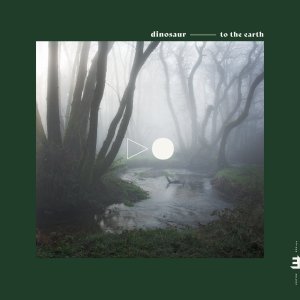 Vicente/Brice/Sanders: Unnavigable Tributaries
Vicente/Brice/Sanders: Unnavigable Tributaries
The improvising trio with Portuguese trumpeter Luis Vicente and two UK players, Olie Brice on double bass and Mark Sanders on drums recorded an album with the title of Unnavigable Tributaries in Lisbon after a short tour of Portugal, a tour that Olie Brice describes in his notes on Bandcamp as ‘a week of fantastic gigs, sunshine, great food and beautiful wine’. The music on the album is clearly the result of that good time and the great empathy between the three players, and features the wonderful interaction between three equals that is characteristic of free jazz today. It is exciting swinging music that brings together strong melody and great rhythms; as improvised music it is an excellent example of no changes, no time, but a very strong pulse.
Luis Vicente is part of the vibrant Portuguese jazz and improv scenes. At the Europe Jazz Network meeting in Lisbon in 2018 the Portuguese organisers stated that, as the scene furthest to the West in Europe, they sometimes feel isolated, but I would suggest that this has meant that many Portuguese players have developed strongly individual voices. This is certainly the case with Luis Vicente; he has a beautiful burnished tone on the trumpet and is able to develop long flowing lines in his solos. He is also very interactive in this trio and listens to what Brice and Sanders are doing and reacts to it. He can also create interesting textures on the trumpet. All this becomes immediately apparent on Track 1, Côa, where Vicente moves between long and short lines in reaction to the wonderful swirling rhythms created by Sanders and Brice. Track 2, Tua, is a little different in that Sanders and Brice start with choppy rhythms and Vicente reacts with short punchy phrases and an occasional rasping sound before moving into a more fluent phase and a final gentler solo. On Track 3, Sabor, Vicente uses the wah wah mute and on the final tracks, Corgo, Tavora and Paiva Vicente moves between different textures on the trumpet exploring different sonic possibilities and more regular trumpet lines. Throughout Brice and Sanders contribute by creating the strong rhythms and lines described above, always seeking to interact with the trumpet.
The album is issued in Multikulti Project/Spontaneous Music Tribune series. Just 300 copes have been pressed, but it is available on Bandcamp.
Dinosaur: To The Earth
 To The Earth, issued on the Edition Label, is Dinosaur’s third album, and, in my opinion, is its best yet. The band has been together for ten years having formed originally as the Laura Jurd Quartet before changing the name to Dinosaur. The group has undoubtedly benefited hugely from having been together and playing regularly for so long, and from the fact that they all seem to get on well together. The group features Laura Jurd on trumpet, flugelhorn and on this album tenor horn as well, Elliot Galvin on piano and keys, Conor Chaplin on bass and Corrie Dick on drums. The music on this album is more acoustic than on the previous album, Wonder Trail, but, as Liam Noble notes in his excellent sleeve notes, there is nonetheless still a kind of underlying electronic feel to it all.
To The Earth, issued on the Edition Label, is Dinosaur’s third album, and, in my opinion, is its best yet. The band has been together for ten years having formed originally as the Laura Jurd Quartet before changing the name to Dinosaur. The group has undoubtedly benefited hugely from having been together and playing regularly for so long, and from the fact that they all seem to get on well together. The group features Laura Jurd on trumpet, flugelhorn and on this album tenor horn as well, Elliot Galvin on piano and keys, Conor Chaplin on bass and Corrie Dick on drums. The music on this album is more acoustic than on the previous album, Wonder Trail, but, as Liam Noble notes in his excellent sleeve notes, there is nonetheless still a kind of underlying electronic feel to it all.
The title track starts with an attractive unison line from trumpet and keys, then goes into a fine trumpet solo that gradually builds up in intensity over its length. It slips in an interesting growl at one point, and then the track moves into a bass solo and back into the theme before a short trumpet coda. The compositions throughout are excellent with five of the seven penned by Laura Jurd, one, For One, by the whole group, and one Absinthe by Billy Strayhorn, originally written for the Ellington Orchestra’s Afro-Bossa album. The quality of the writing is again apparent on the second track, Slow Lotis, which begins with a keys and bass line. Elliot solos on keys with an occasional growling interruption from the trumpet. Track 3, Mosking, is apparently a nod to the Norwegian group Moskus from which the group acknowledges an influence. Here I think I’m right in saying that Laura plays tenor horn; it has an interesting sound with a lot of that interesting growling sound heard on Tracks 1 and 2. Again on Track 4, Held By Water, I believe Laura plays tenor horn on the opening statement of the tune, but I think she switches to flugelhorn for her solo. Corrie Dick’s drums are particularly effective here; Liam Noble suggests that they have something of ‘machine drum dryness’ as well ‘acoustic warmth’ (sleeve notes); they certainly give a very special edge to the music. On Strayhorn tune, Absinthe, the initial ensemble passage captures something of the Ellington sound, but the solos go elsewhere, but I like to think that the Duke would have liked the interaction between trumpet and piano on this track. Track 6, Banning Street Blues, has a nicely attractive fun up-tempo tune and strong solos from piano and bass. The final short track, For One, has more of a bluesy sound and a fine solo from trumpet in that style.
Each member of the quartet has his or her individual voice which comes out in the solos and the interaction between the members of the group; this is one of the main strengths of the group. Some see the quartet as quintessentially English, but I would regard it as very much a European group that has developed its individual voice from influences from, as well as British music, American jazz, notably Miles Davis, but also from Norwegian jazz, that is Moskus, as mentioned above. All this plus the fact that they have stayed together for so many years gives them their strong character.
A final point: both albums have about 40 minutes of music. As I have stated before, I welcome this slightly shorter length as I like to listen to an album straight through without pause. This is so much easier to do with an album of this shorter length.